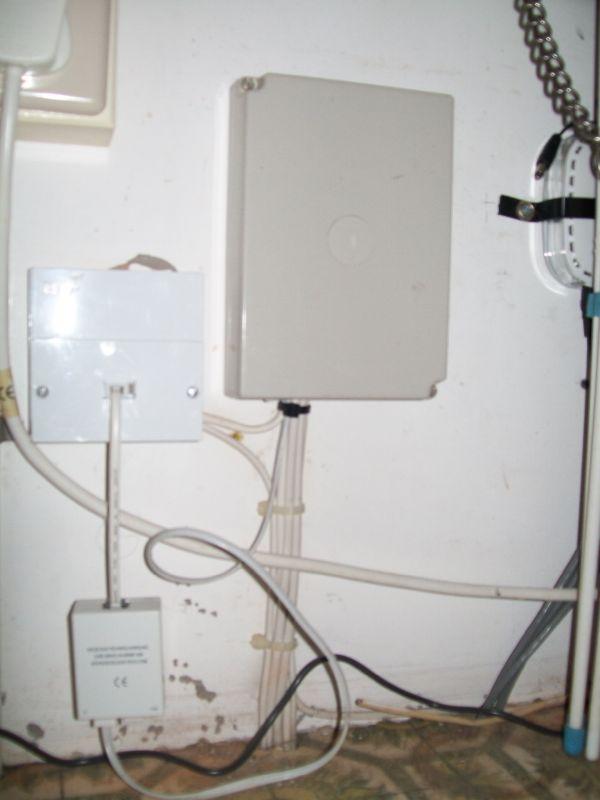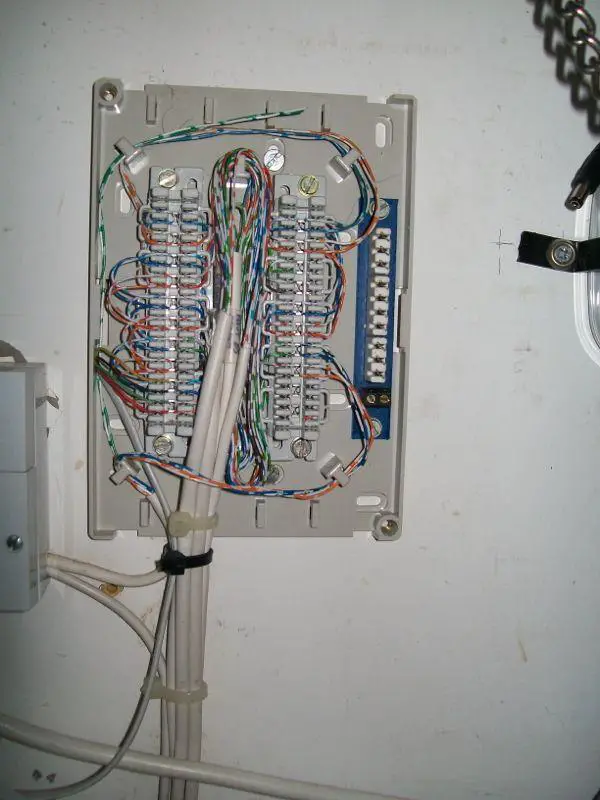We switched to Sky fibre last year to get a better broadband speed. Originally we only got about 2M down & 0.7 up on ADSL, this increased to about 5M down and 2M up on fibre which was an improvement but nowhere near to what we were expecting, but as we are approx 3.6km from the exchange we accepted these figures.
Over the period the up gradually reduce to under 1M so we rang Sky who sent out a BT Engineer to check out the line. He found there was a problem with their junction box at the top of our road.
The BT guy was very helpful and tested our house installation and found that we could get 40M down and 9M up when he plugged into the test socket on the master socket.
But around the house we were only getting about 5M to 10M down and 3M to 3M up. He recommended that we rewire using CAT5 cable as we had old standard telephone cables and some junction boxes in the line.
We have now rewired in CAT6 cable & positioned the master socket in the upstairs bedroom. There is then a short CAT6 extension from the master to a socket where the router is located in the adjacent bedroom.
We tested after this first install and got 38M down and 8M up. A result we thought!!
We then added a spur extension in CAT6 from the master socket to an extension socket in the hall for the phone. We then tested again and the figures were around 26M down and 2M/3M up.
Why the difference??
We then tried several different configurations, even replacing the CAT6 to the extension socket. The only thing that worked was bypassing the CAT to the downstairs extension with a standard flat cable phone extension lead plugged into the front of the master socket via a microfilter.
Can anyone help with advice on to what's going on?
Richard
Over the period the up gradually reduce to under 1M so we rang Sky who sent out a BT Engineer to check out the line. He found there was a problem with their junction box at the top of our road.
The BT guy was very helpful and tested our house installation and found that we could get 40M down and 9M up when he plugged into the test socket on the master socket.
But around the house we were only getting about 5M to 10M down and 3M to 3M up. He recommended that we rewire using CAT5 cable as we had old standard telephone cables and some junction boxes in the line.
We have now rewired in CAT6 cable & positioned the master socket in the upstairs bedroom. There is then a short CAT6 extension from the master to a socket where the router is located in the adjacent bedroom.
We tested after this first install and got 38M down and 8M up. A result we thought!!
We then added a spur extension in CAT6 from the master socket to an extension socket in the hall for the phone. We then tested again and the figures were around 26M down and 2M/3M up.
Why the difference??
We then tried several different configurations, even replacing the CAT6 to the extension socket. The only thing that worked was bypassing the CAT to the downstairs extension with a standard flat cable phone extension lead plugged into the front of the master socket via a microfilter.
Can anyone help with advice on to what's going on?
Richard




